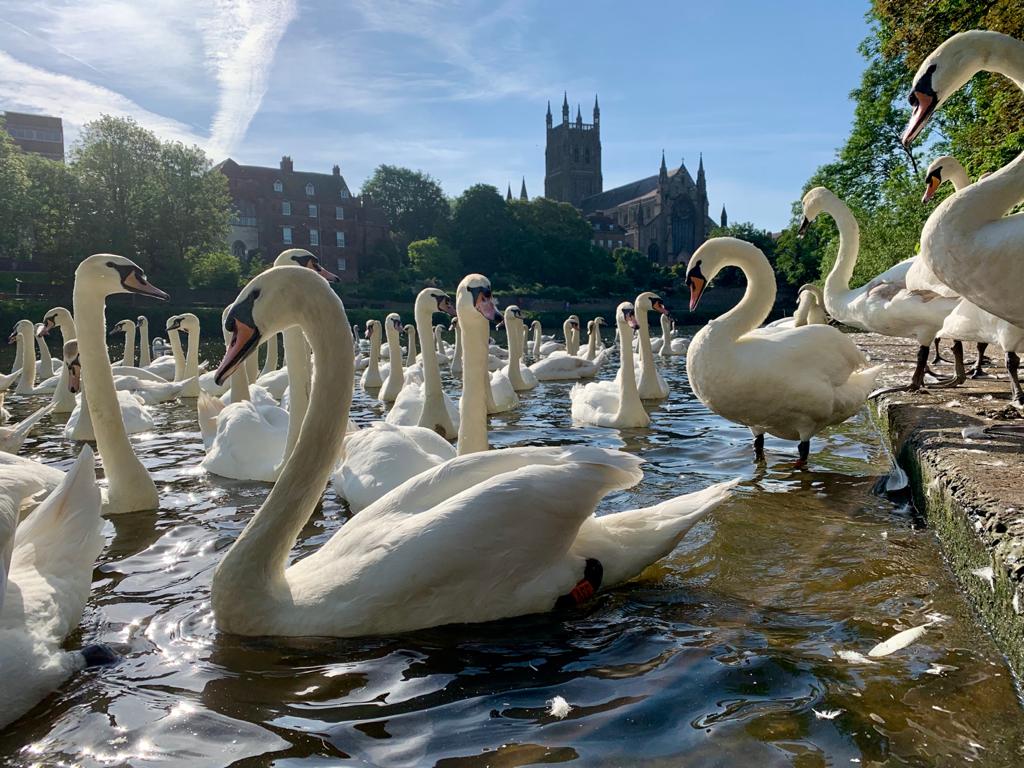NO
There is cause for concern if a swan…
- is persistently not eating (except for nesting females)
- stays in the same place all day
- has fishing line trailing or wrapped around it* – * NEVER TRY TO REMOVE SWALLOWED FISHING LINE: THERE MAY BE A HOOK THAT WOULD TEAR THE OESOPHAGUS
- has a fish hook anywhere (most noticeable around the face or feet)
- is limping severely or cannot bear weight
- has a trailing or torn wing or a major wound
Call for help
If you are uncertain of the need for help, try taking a photograph or video to help your enquiry.
SWANS IN THE WRONG PLACE: swans may crash land onto roads or gardens. They may have been chased there by a territorial pair.
- If the swan is close to a flock of swans and is uninjured, it can be slowly ushered back to the water.
- If the swan is injured, as above, or is on land close to a breeding pair, call for help.
YES
Certain swan behaviour or characteristics may seem odd, but are nothing to worry about…Angel Wing
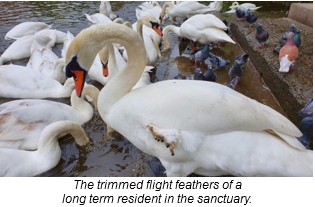
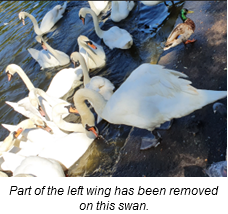
Angel wing swans have a twist in the carpal or wrist joint of the wing, causing the feathers to stick out to the side. In Worcester these are trimmed once moulting is over so they don’t catch on things.
Surgery on the joint has been used in a few severe cases. Feathers no longer stick out, but the swan is still unable to fly. These swans are therefore confined to the river and the surrounding fields during floods. They are more vulnerable in territorial disputes and defending cygnets.
There are also a couple of swans in Worcester with partial wings following collision with power lines. Rescue centres these days may decline to operate on wing injuries, believing that the swan would not be able to keep itself warm or defend itself adequately.
Stretching and relaxing
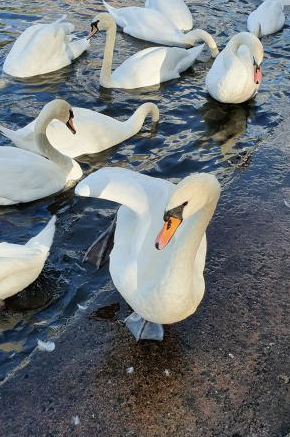
It is normal for swans to stretch their wings out one by one, down the length of their body. They have excellent balance.
Swans often tuck one foot up into their feathers to warm it. It can be completely hidden from sight for some time, making it look as though it is swimming awkwardly.
Or the leg might be stretched out casually over its back, with the foot like a flag (Photo botton left: Yorkshire Swan Rescue Hospital). Think of it as crossing the legs.
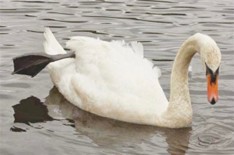
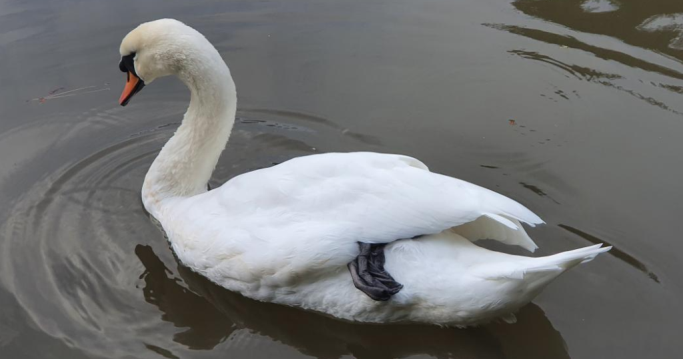
Bathing
Swans love to bathe. It does look desperate sometimes, but they’re giving their feathers a good wash. They flap wildly, beat the water and even roll right over.
Moulting and Preening
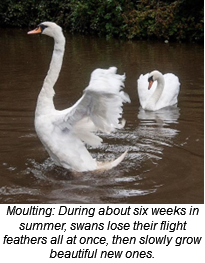
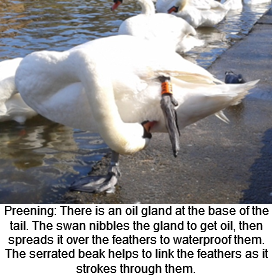
Territorial behaviour
Swan pairs defend their territory against all other swans. There can be vigorous displays of aggression and fighting. In most cases the weaker swan will give way, but occasionally there are injuries or deaths. If there are injuries, call for help.
Between autumn and early spring, cygnets leave home. Some are reluctant to go and are chased off by parents preparing for their next brood. It may seem quite brutal but usually cygnets learn they have to go in time. Rescue may be needed if, for example, the territory is enclosed and difficult for inexperienced cygnets to fly from.
